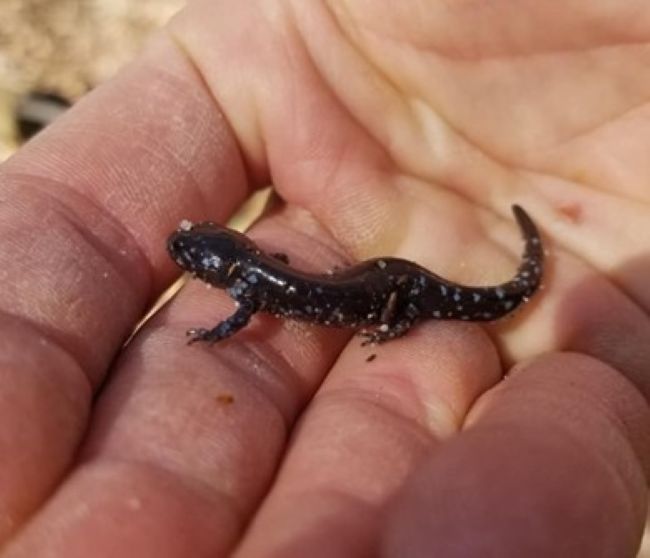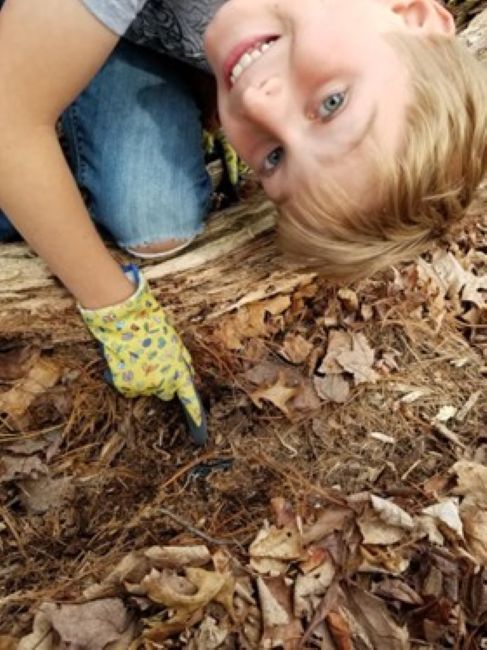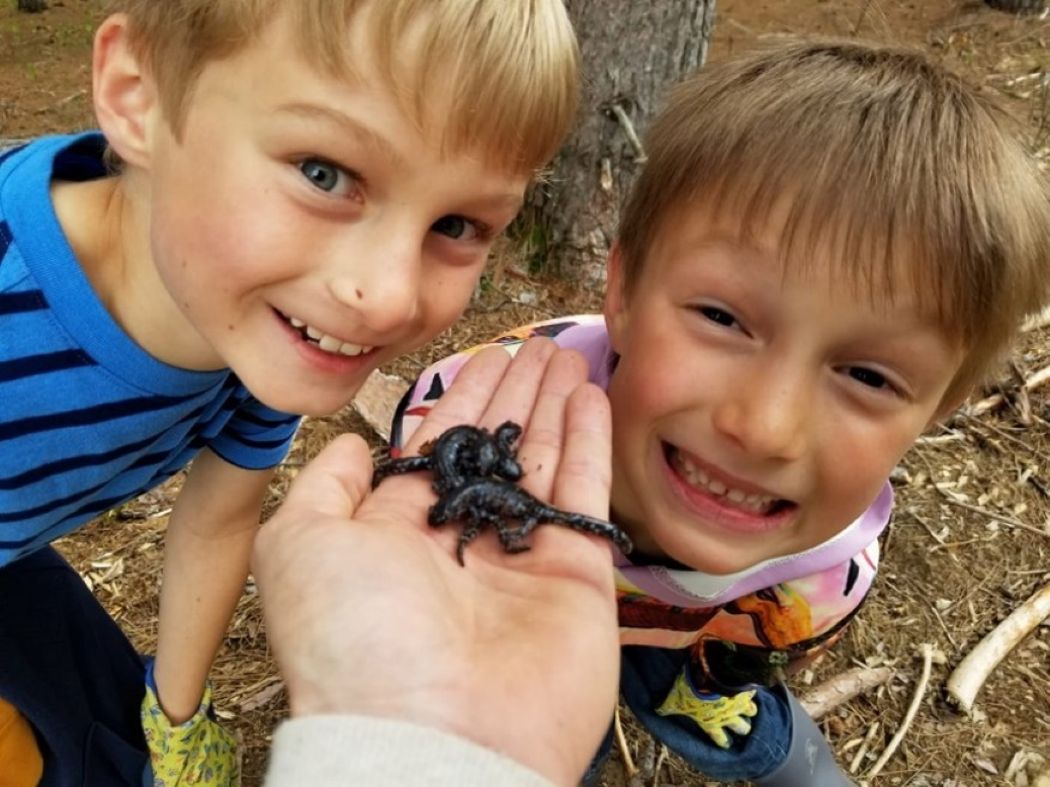by Chris Thompson
As spring approaches, visitors to Schmeeckle may notice many seasonal changes are happening. Some common sights are robins returning, turtles basking on sunny days, plants beginning to pop through the leaf litter, and the chipmunks running about. Another creature that you may not have noticed starting to move around in spring is one of Schmeeckle Reserve’s smallest and least seen vertebrates, the blue-spotted salamander.

**make sure hands are free of all chemicals if handling any amphibian -and wash hands afterward
Blue-spotted salamanders are small (about 3 or 4 inches long) amphibians, found almost statewide in Wisconsin. These salamanders, as seen in the pictures, are primarily black, with diffuse blue spots covering their bodies. They have long toes: four on the front feet and five on the hind feet. They are tolerant of a wide range of soil and forest types and have been found throughout Schmeeckle Reserve, from sandy soils to wetlands. Blue-spotted salamanders need to migrate short distances in spring to ephemeral pools to mate and lay eggs. Because of this, warm and wet nights in spring are some of the best times to observe them. Other than the short spring “migration” to ponds, the most common place to find blue spotted salamanders is under logs and other debris on the forest floor, where humidity stays high, as they do need to keep their skin moist for survival.

**remember to return all logs and rocks to their original position if turning over!
Blue-spotted salamanders are carnivorous, feeding on various invertebrates such as slugs, worms, small insects, and spiders. They tend to stay underground or beneath debris during the day, but at night or during rain showers, they may emerge to feed.
On the other side of the food chain – blue-spotted salamanders are preyed upon by a number of Schmeeckle’s larger predators such as raccoons, garter snakes, and opossum. In the water – fish, giant water bugs, and diving beetles may also prey on the hatchlings. As for defense, they do have a toxic substance in their skin that is distasteful to many creatures.
